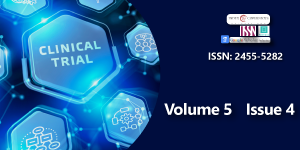A case report on sublingual hematoma
Main Article Content
Abstract
The sublingual hematoma is the cause of bleeding and swelling under the tongue it is commonly seen in the people after some kind of tooth surgery or implant or it can commonly see in the people after a mouth or tongue injury.
Demanding intricacies exemplary oral anticoagulants are spoken to by gastrointestinal dying, genitourinary and intracranial. In any case, the hematoma of the dialect is extraordinary. It is accounted for as unconstrained or actuated by a tongue bite, tracheal intubation, yet in addition, can be advanced by fibrinolytic treatment. Its area, the hematoma might be in charge of respiratory misery by deterrent of the upper aviation routes, justifying exceptional thoughtfulness regarding guarantee auspicious administration. We portray the event of dialect hematoma following an overdose of oral anticoagulants, such acenocoumarol (Sintrom®), supported by small lingual damage in a 71 years of age understanding conceded for respiratory pain by the obstacle of the upper airways, whose development was ideal.
Downloads
Article Details
Copyright (c) 2018 Bahathiq AO.

This work is licensed under a Creative Commons Attribution 4.0 International License.
Delerme S (2011) Accidents des traitements anticoagulants oraux. EMC - Médecined’urgence 1-6. Link: https://goo.gl/iRgJ2X
Haute Autorité de Santé (2008) Good management practices for oral anticoagulant overdose, situations of hemorrhagic risk and hemorrhagic events in patients taking oral anticoagulants in the ambulatory and hospital setting--April 2008. J Mal Vasc 33: 202-213. Link: https://goo.gl/B9ewRe
Elalamy I (2007) Accidents des traitements anticoagulants oraux; EMC (Elsevier Masson SAS, Paris). MédecineD’urgence 25-190-B-10. Link: https://goo.gl/zGSNkW
González-García R, Schoendorff G, Muñoz-Guerra MF, Rodríguez-Campo FJ, NavalGías L, et al. (2006) Upper airway obstruction by sublingual hematoma: a complication of anticoagulation therapy with acenocoumarol. Am J Otolaryngol 27: 129-132. Link: https://goo.gl/9dR94v
Bahathiq AO (2018) Treatment of type 2 diabetes, GLP-1 Agonist and a DPP-4 Inhibitor. J Proteomics Enzymol 7:1. Link: https://goo.gl/bE8dK3
Gooder P, Henry R (1980) Impending asphyxia induced by anticoagulant therapy. J Laryngol Otol 94: 347-352. Link: https://goo.gl/DKpqTJ
Kounis NG, Zarras GM, Frangides C, Andreas A (1996) Lingual haematoma after treatment with alteplase (recombinant tissue plasminogen activator) for acute myocardial infarction. Heart 75: 427. Link: https://goo.gl/zBNMcy
Lee M, Berger HW, Granada MG (1980) Acute upper airway obstruction. Sodium warfarin-induced hemorrhage into the base of the tongue and epiglottis. Chest 77: 454–455. Link: https://goo.gl/aHP79p
Baglin TP, Keeling DM, Watson HG (2006) Guidelines on oral anticoagulation (warfarin): third edition—2005 update. Br J Haematol 132: 277–278. Link: https://goo.gl/yiygcF
Hing NR, Bowler MD, Byth PL (1985) Lingual haematoma leading to upper airway obstruction. Br J Oral Maxillofac Surg 23: 322–325. Link: https://goo.gl/7ZuVpn
Saah D, Braverman I, Elidan J (1993) Traumatic macroglossia. Ann Otol Rhinol Laryngol 102: 729–730. Link: https://goo.gl/WNTkMe
Shaps HJ, Snyder GE, Sama AE (2001) Airway compromise secondary to lingual hematoma complicating administration of tissue plasminogen activator for ischemic stroke. Ann Emerg Med 38: 447–449. Link: https://goo.gl/UXyFdP

